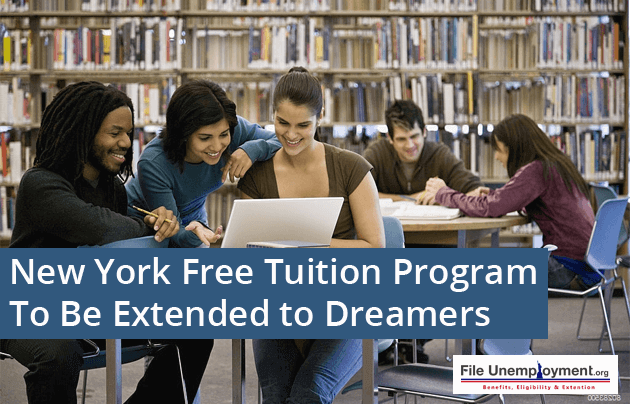New York Governor revealed in his FY 2019 budget proposal that the state’s free tuition program would be extended to illegal immigrant students. According to a briefing book, Cuomo’s plan “includes legislation to implement the DREAM Act, opening the door of higher education to thousands of New Yorkers.”

The briefing states that illegal immigrants have been accepted for in-state tuition at the State University of New York (SUNY) and the City University of New York (CUNY) since 2002, however, but explains that each year, “many talented students who graduate from New York high schools remain unable to fulfill their potential simply because they cannot afford the tuition and lack of access to tuition assistance to help pay for school.”
In 2017, Governor Cuomo launched a program to make tuition free-of-charge at SUNY and CUNY. The option is available during the 2018-2019 school year to resident students whose family income is not above $110,000. This year, according to his FY ‘19 budget briefing, he’s taking it a stride forward by extending free education under his “Excelsior Scholarship Program” to students who illegally reside in the country.
The DREAM Act declares that an investment in young immigrants’ futures is an investment in New York’s future. It further states that the act will give undocumented students access to the new Excelsior Scholarship, the Tuition Assistance Program as well as other state-administered scholarship. It was during the Executive Budget Address, where Cuomo announced his record of restoring fiscal discipline while simultaneously achieving historic progressive accomplishments and strengthening middle-class New Yorkers.
A Summary of the Legislation in FY ‘18
On April 12, 2017, New York Governor Andrew Cuomo had signed a bill into law on providing free tuition to students who attend the state’s public colleges and universities. New York became the first state to offer free four-year college to students. The funds for the program would be exclusively for tuition purpose, and students would still need to acquire other resources to pay for room, board, and other indirect fees. The program only covers tuition fees which are not covered by other grants. Students whose family income limit is less than $100,000 per year would be eligible for the grant if they enroll full-time at any community college or public university within the state.
Republicans in the New York Senate successfully lobbied to force students to live an work in the state for as many years as they received aid. On failing to do so, the grant would be turned into a loan. Moreover, one-third of students in New York public universities enroll part-time whereas only students who enroll full-time are eligible for the grant.
The program’s 30-credit requirement which was criticized by some was said to be a research-proven strategy to raise GPAs, improve retention rates and ultimately boost the college completion in the state.
Other States That Offer Free Tuition
Since 2015, states like Oregon, Rhode Island, Montana, Minnesota, Kentucky, Arkansas, Nevada and West Virginia have enacted legislation for a promise program. However, New York with its Excelsior Scholarship Program still remains the only state to offer last-dollar assistance to students at the four-year level.
To qualify for tuition-free programs, in-state students may apply to the state’s tuition-free scholarship program and submit a Free Application for Federal Student Aid. Here is a list of colleges that offer tuition-free programs in the country.